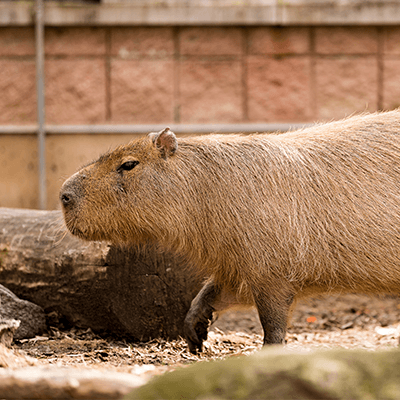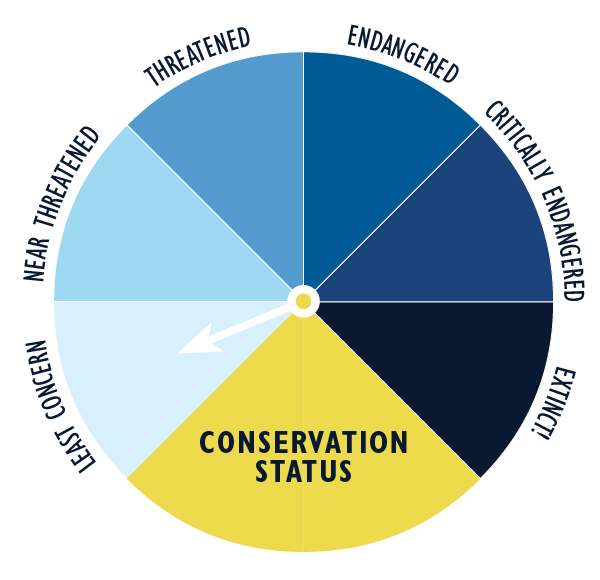
About Capybara
The capybara is the largest rodent in the world and belongs to the genus Hydrochoerus, along with the only other member, the lesser capybara. Its other distant relatives are the guinea pig and rock cavies, while its closer relatives include the agouti, the chinchilla, and the coypu.
Habitat
The capybara is a strictly South American rodent species. Its range extends throughout most of Brazil, Uruguay, Venezuela, and Columbia, south into the Argentinian pampas, and west to the Andes.
Diet
Capybara’s diets consist mostly of grasses and aquatic plants, with some bark and fruit.
Family Life
Capybaras are social animals meaning you will typically find them in groups of 10 to 20 others. The group may consist of two to four males and four to seven females with the rest being their young. Group living appears to be extremely important to capybara survival—without a group, an individual is excluded from most grazing habitats and has little chance of finding a mate. Capybaras are polygynous and promiscuous, meaning dominant males in social groups try to monopolize mating activity by mating with multiple females, sometimes with no success.
Conservation Status
The conservation status of the Capybara is classified as least concern.
Threats
- Especially while young, capybaras are an important food source for many large predators including anacondas, caimans, jaguars, and humans. Capybaras will give an alarming bark when predators are near.
- To avoid predators, capybara’s will often hide in the water with just their nostrils and eyes exposed. They can stay completely submerged for up to five minutes.
- Humans will often hunt capybaras and use their meat for food and hide (skin) for leather.
Facts about Capybara
Class:
Mammalia (mammals)Order:
Rodentia (rodents)Family:
Caviidae (cavy)Genus:
Hydrochoerus (capybaras)Species:
Hydrochoerus hydrochaeris (capybara)Life Span:
6 – 10 years (wild) / 6 – 12 years (zoo)Size:
3.5 – 4.4 feet (1 – 1.3 m)Weight:
77 – 145 pounds (35 – 65 kg)
Fun Facts
- Capybaras are the largest rodent in the world, weighing up to 145 pounds in some cases.
- A master of grasses? In the language of the Guarani Indians, capybara translates to “master of the grasses”.
- Woof! Male capybaras can bark like dogs when they feel threatened or when helping to herd their young.
- Excellent swimmers! Although capybaras are said to run as fast as horses, they are completely at home in the water – helped by the fact that their bodies are only slightly denser than water.